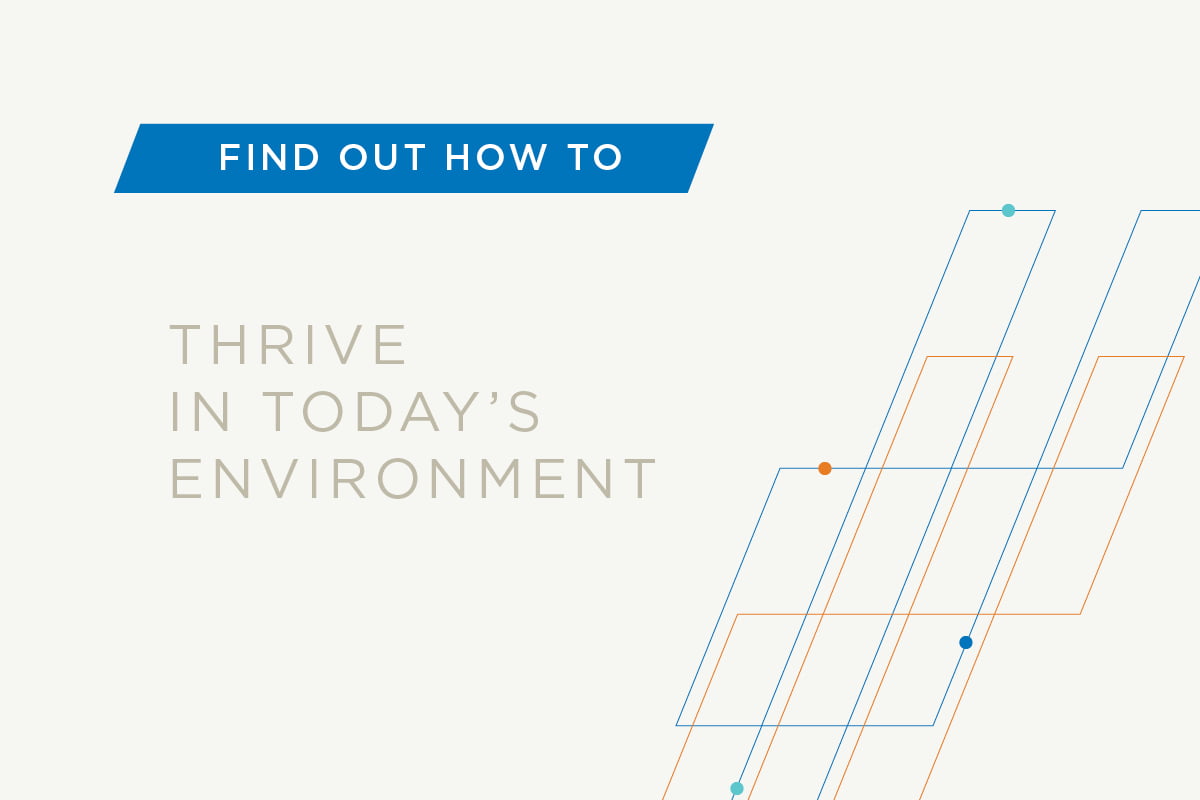Summary
Vericast recently surveyed consumers and advertisers within the CPG and grocery, drug and mass industries and released its CPG + Grocery TrendWatch report highlighting key findings.
Here, Aimee Englert, Executive Director of CPG Client Strategy for Vericast provides her perspective on current trends in CPG marketing.
How do you think the CPG and grocery industries have changed in the past two years? Do you think these changes are temporary shifts or more lasting and long-term?
The most obvious change is the dramatic rise in US online shopping which we all know skyrocketed due to the pandemic. Many have sustained the new, omnichannel shopping habits they formed, and today well over half the population shops online, per dunnhumby.1 CPG brands have a bigger job to do, ensuring they show up consistently in offline and online channels with everything from inventory to pricing to promotions. And many have shifted media investments to digital channels — social and retail media especially — to meet consumers where they are.
Increasingly though, consumers today are hard to pin down. According to our research, inflation has changed the way people shop, compelling them to shop around more to find best prices while also trying to conserve trips to save on fuel. Comparison shopping, switching between brands and trading down to private label are all behaviors on the rise, even among surprising segments of the population, such as affluent consumers. In our CPG + Grocery TrendWatch2 report, we looked at affluents and three other generational groups and found opportunities for CPG marketers to connect with these shoppers considering ongoing inflationary pressures.
Will these trends stick? Absolutely, online shopping is here to stay but I think the balance of online and in-store will continue to flex according to the changing needs of the consumer. And retailers need to tailor their online experience to those needs that are constantly evolving, and vastly different from in-store. Regardless of how long inflation persists, I think there’s a good chance the savings behaviors are likely to stick. We’re past the generally accepted benchmark of number of days for a behavior to become a habit, and with depleted savings and rising interest rates, for example, it could be a while before household budgets experience any relief.
Consumer shopping continues to evolve as consumers adapt to various factors — particularly over the past couple of years — first the pandemic and resulting supply chain issues and now economic and financial challenges. What can retailers/brands do to adapt to (and anticipate) these changes to meet the needs of shoppers?
First, brands need to ensure they have product on the shelf. Of course, this is easier said than done with so many factors affecting the supply chain, from weather to war to politics. But frustrated Americans seem to be looking to place blame, and their focus has shifted to blaming supply chain costs and constraints for driving grocery inflation. Even if your distribution isn’t back to pre-pandemic levels, it’s important to advertise to help ensure that your brand stays top of mind to keep shoppers, especially price sensitive ones, from drifting to a competitor. Serve your digital impressions to guide shoppers to stores where products are in stock. Advertise when your product is on sale. Make your ads interesting, make them fun — but don’t overload, insult or go over the top with frequency that turns potential customers away. And because people are changing up what they buy, we recommend national brands take a close look at private label in their respective categories and plan to mitigate any retailer efforts to win share.
With all the investment in digital media, brands can take advantage of the opportunity to gather data to inform personalization efforts and then actually deliver personalization to the audiences and generations that especially want it, such as we found is the case with millennial parents in our TrendWatch report. One caution though: Extreme shifts in advertising can leave valuable consumer segments behind. Don’t forget about baby boomers and those who still enjoy the physical world. Per our survey, although baby boomers are adopting more omnichannel shopping habits, they appear to be less influenced by social media and digital marketing. They’re looking for printed ads and coupons to guide shopping decisions. Our report found that just over 40% of baby boomers say they are most influenced by coupons that arrive in the mail or newspaper, and 43% still favor circulars in the mail and 42% from newspapers. It’s all about striking a balance.
A piece of advice to retailers — insist on good customer service to soothe frustrated shoppers. Make every attempt to improve customer service since everything else is screwed up! Another suggestion is to promote meal solutions and recipe ideas given the trend toward at-home eating.
Value remains important to shoppers. This can mean getting a good deal or the best price, or it can be more about perceived quality or convenience. What advice would you give to retailers and brands to stay top of mind with consumers and drive purchase, especially in these inflationary times?
Great question, and I completely agree value means different things to different people. Our research confirmed that consumers have noticed brands are passing on higher prices to the shopper — whether through increased price at the shelf or smaller packages for the same cost. And they are coping with these price increases by shopping for sales more often and using coupons more. But they’re having a hard time finding coupons for the products they want or finding them at all; many don’t get coupons or flyers anymore because they stopped coming in the mailbox, or they stopped getting the newspaper. Our TrendWatch study found that 62% of brands plan to spend MORE or the same on print coupons this year, but we have yet to see good evidence of that. Many of the brands that pulled back on coupons during the pandemic haven’t restarted them. There is a real opportunity for brands to recognize just how much the average American family is struggling and deliver savings opportunities to help balance budgets — and bonus — keep your brand in the basket.
Another value driver these days is private label. Store brands are capturing new shoppers as spending becomes more intentional, and the latest trends suggest that consumers switching to store brands are sticking with them. But lower price is not the only reason they’re buying them. According to BizRate Insights, some people are switching because private brand assortments are bigger, or they don’t even realize they’re store brands.3 For national brands, it’s critical to mind the price gap. Identify private brand strengths or weaknesses and adjust your pricing, promotion and targeting strategies to protect share. Hone your messaging to flaunt differentiators or product improvements that will sway shoppers to pay more for your product. It’s all about disrupting the trade down mindset, by whatever means.
At the same time, retailers cannot rest on their store brand laurels. A private brand is not a shoo-in if the product experience is not positive. It doesn’t matter if it’s cheaper — consumers won’t repeat buy. And to catch attention in the first place, store brand packaging must imply quality or people will infer inferiority.
As people resume activities outside of their homes and continue to do a mix of in-store and online shopping, what can brands/retailers do to improve the shopping experience regardless of channel? How can they be helpful to consumers as they manage everyday life?
We know people have increased their omnichannel shopping, but Vericast research shows that consumers rate in-store shopping above online shopping in being able to meet their needs — in all aspects except for saving them time. This is particularly important for millennial shoppers who rely on online shopping more than other generations. Feeling the pressure of inflation, millennial parents report that they go online to find promotions and products that fit their lifestyles. Most importantly, convenience plays a huge role in their preferences, leading them to pay extra for delivery or subscription services that ease the burden of in-store shopping. But brands have an opportunity to learn from their in-store shopping preferences and adapt them to the ecommerce experience through advertising. As an example, consumers say they enjoy the discovery and inspiration that in-store shopping provides, resulting in impulse purchasing. Digital campaigns can encourage that same sense of discovery while playing to the convenience aspect of ecommerce. Targeted ads to deal-seeking shoppers featuring key impulse categories such as snacks, cookies or seasonal items can encourage more online shopping.
For retailers, like my earlier point on customer service, it’s about the basics. Have enough employees. Have all lanes open. If you can’t staff all lanes, convert some of the unstaffed full-service lanes to hybrid lanes — self serve for bigger baskets, because no one follows the 12 items rule. In advertising, communicate a clear raison d’etre. “Retailer X delivers comparable brands at better prices.” Advertise your guarantee on this. And just as with brands, the rising share of total business in ecommerce strongly points to the need to understand the value and changing needs of the online customer. Retailers must adapt their respective online experience to those needs that are evolving quickly.
Learn about the latest in buying habits among various consumer segments and get insight from our survey of CPG and grocery industry professionals. Download the 2022 CPG + Grocery TrendWatch.
1 dunnhumby Wave 9 Covid Survey US Grocery Shopper Behavior, Feb 2022
2 Vericast 2022 CPG + Grocery TrendWatch, n = 1,909 consumers
3 Insider Intelligence, Private Label Flash Survey by Bizrate Insights, March 1, 2022



